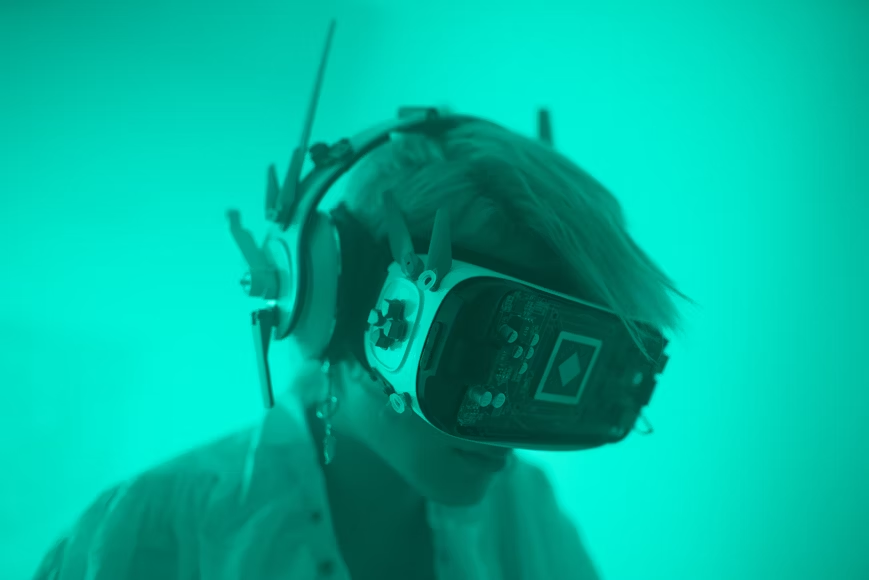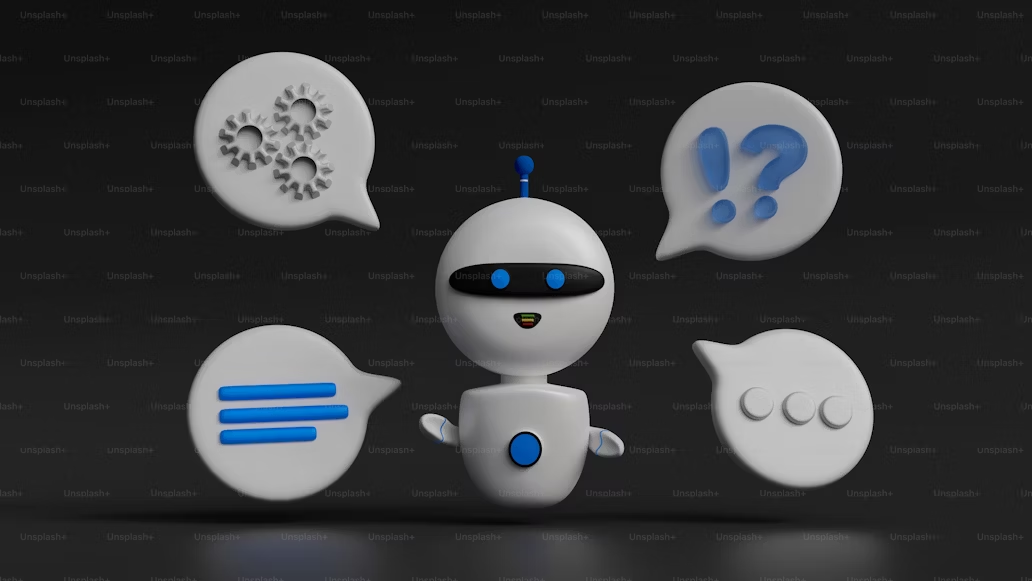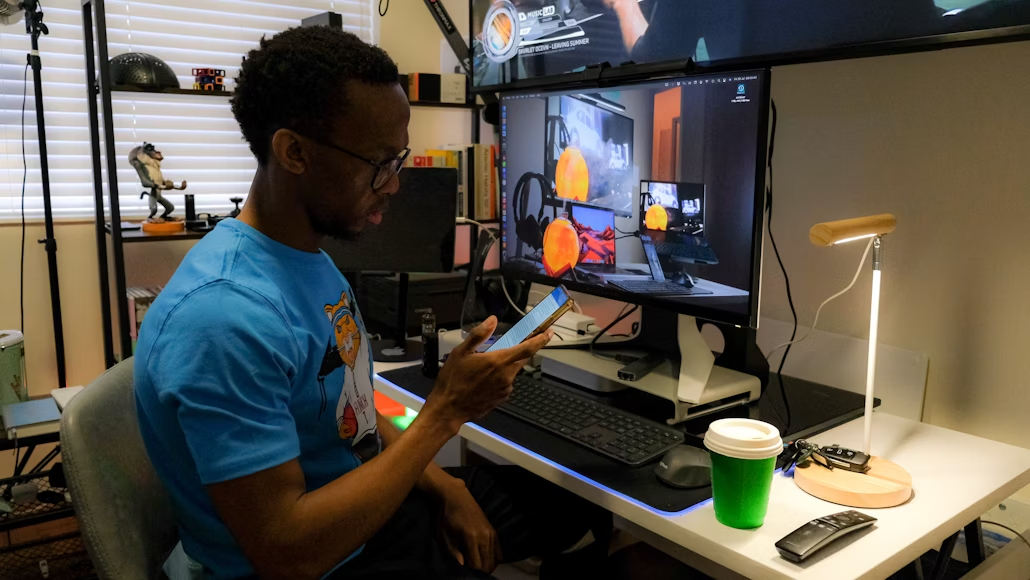Virtual Assistance Artificial intelligence (AI) is changing how people use technology in today’s fast-paced digital environment. AI virtual help is among the most significant advancements. AI-powered virtual assistants (VAs) have become indispensable tools in both personal and professional lives, helping users with everything from scheduling to round-the-clock customer service. These intelligent systems are revolutionising sectors worldwide as their capabilities grow, in addition to changing daily routines.
What is AI Virtual Assistance?
Artificial intelligence-powered computer programs or applications that communicate with users via text or voice and carry out tasks or provide services in response to user enquiries or commands are referred to as AI virtual assistants. AI virtual assistants, as opposed to simple chatbots, mimic human-like interactions by using machine learning, contextual awareness, and natural language processing (NLP).
The following are some well-known instances of AI virtual assistants:
Siri (Apple)
Alexa (Amazon)
Google Assistant
Cortana (Microsoft)
ChatGPT (OpenAI, when used interactively)
These systems are made to handle smart home appliances, conduct online searches, respond to enquiries, offer individualised assistance, and automate repetitive operations.
The Evolution of Virtual Assistants
With basic command-based programs that needed users to type precise inputs, virtual help had its start. With the introduction of voice recognition and natural language processing (NLP) as AI developed, VAs were able to comprehend human language more intuitively. Although early versions, such as Microsoft’s Clippy, had limited functionality, they helped to create more intelligent systems.
- By incorporating AI,
- These systems were able to:
- Learn from interactions.
- Identify user preferences.
- Develop over time via machine learning,
- Respond with more accuracy and context awareness
·

Applications of AI Virtual Assistance
AI virtual assistants aren’t just for personal use anymore. Their uses are found in a variety of fields, such as:
1. Customer Service
Voice assistants and chatbots driven by AI answer hundreds of consumer questions every day. They can process orders, offer product details, help with troubleshooting, and, if required, forward complicated problems to human agents. Improved customer satisfaction and lower expenses are advantageous to businesses.
2. Healthcare
Virtual assistants in the healthcare industry help patients with basic health information, medication reminders, appointment scheduling, and even chronic disease monitoring. They improve patient engagement and lessen the workload for medical personnel.
3. Education
Education AI VAs support online learning systems, provide tutoring, respond to academic enquiries, and help with language acquisition. They are useful teaching tools because they provide immediate feedback and personalised learning experiences.
4. Smart Homes
With voice commands, virtual assistants such as Alexa or Google Assistant handle everyday activities, play music, answer queries, and control smart gadgets. Users appreciate the hands-free capabilities and ease of use.
5. Workplace Productivity
AI assistants handle emails, set up meetings, record discussions, and carry out tedious administrative duties in work environments. Employees can concentrate on more strategic tasks thanks to this automation.
6. E-commerce
AI assistants are used by e-commerce platforms to help customers choose products, monitor deliveries, provide tailored suggestions, and respond to questions after a purchase.
Benefits of AI Virtual Assistants
The many advantages that AI virtual assistants provide are what are driving their rising popularity:
1. 24/7 Availability
AI assistants are available 24/7, in contrast to human operators. This guarantees prompt responses, improving user happiness and cutting down on wait times.
2. Cost-Effectiveness
Unlike human operators, AI assistants are available around the clock. This ensures timely responses, increasing user satisfaction and reducing wait times.
3. Scalability
AI assistants are available 24/7, in contrast to human operators. This guarantees prompt responses, which lowers wait times and boosts user satisfaction.
4. Consistency and Accuracy
Unlike human operators, AI assistants are available around the clock. This ensures timely responses, reducing wait times and increasing user happiness.
5. Personalization
AI assistants provide personalised experiences that get better over time by learning user preferences and behaviours through machine learning.
Challenges and Limitations
Notwithstanding their advantages, AI virtual assistants have a number of drawbacks.
1. Privacy Concerns

Concern over the collection, storage, and use of personal data is growing since virtual assistants frequently need access to it. Unauthorised access and data breaches are possible hazards.
2. Understanding Context
Despite considerable advancements in AI, virtual assistants still struggle to comprehend complex human interactions, sarcasm, and emotions.
3. Dependence on Internet and Infrastructure
The majority of AI VAs mostly depend on internet access and cloud-based solutions. Their performance may be hampered by unfavourable network circumstances.
4. Limited Problem Solving
Routine chores are easily handled by virtual assistants, but complicated or novel problems may be difficult for them to handle and call for human assistance.
The Future of AI Virtual Assistance
The future of AI virtual assistance is promising and full of potential. Some key trends include:
1. Emotional Intelligence
In order to identify tone, mood, and sentiment, developers are attempting to improve AI with emotional intelligence. More human-like and sympathetic interactions would result from this.
2. Augmented Reality (AR) Integration
Immersion interactions could be made possible by combining AR with virtual assistants, particularly in virtual teaching, retail, and gaming settings.
3. Voice Biometrics
Voice biometrics may be used more frequently by AI systems to authenticate users in order to increase security, resulting in smoother and more secure access.
4. Industry-Specific Assistants
Specialised knowledge and functionality will be provided by virtual assistants that are customised for sectors such as healthcare, finance, and law.
5. Offline Capabilities
By utilising on-device processing and smaller language models, future AI assistants might be able to operate efficiently without an internet connection.
Ethical and Social Implications
Ethical issues need to be addressed as AI virtual assistants grow more prevalent in daily life:
Bias and Fairness: AI systems may be impacted by biases inherited from training data, which might compromise inclusivity and fairness.
Transparency:
People should understand how their data is used and be aware when they are dealing with a machine.
Job Displacement:
Workers may need to retrain as a result of automation’s potential to decrease demand for some human occupations.
To develop rules and regulations that guarantee the ethical application of AI, governments and tech firms must cooperate together.




